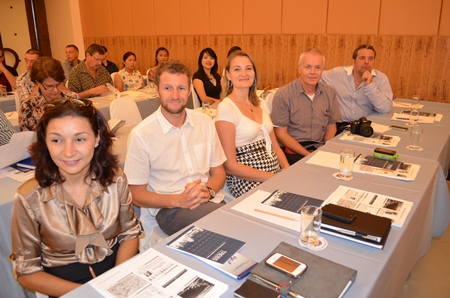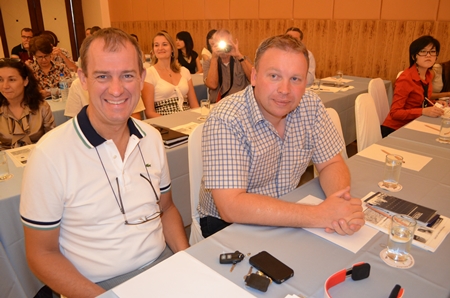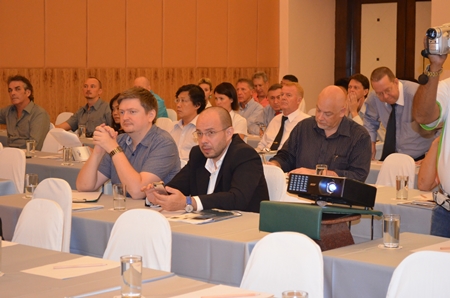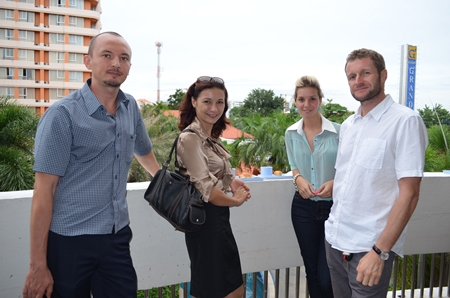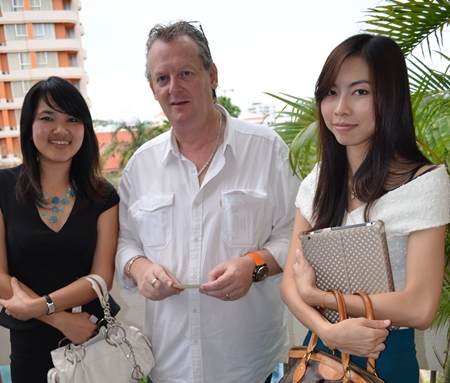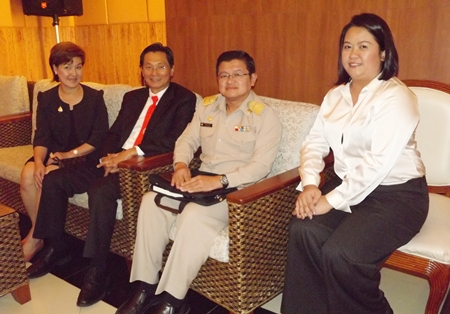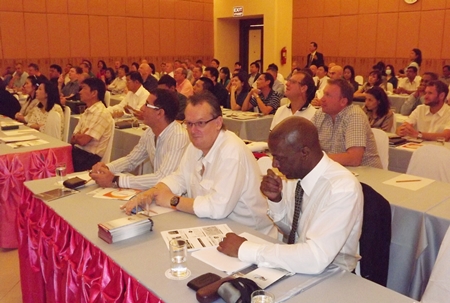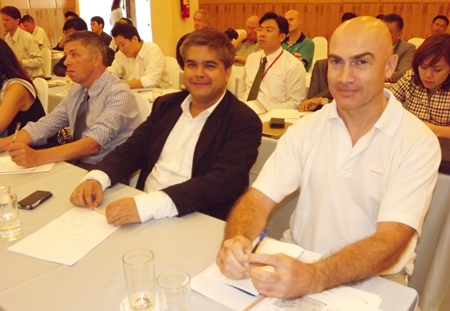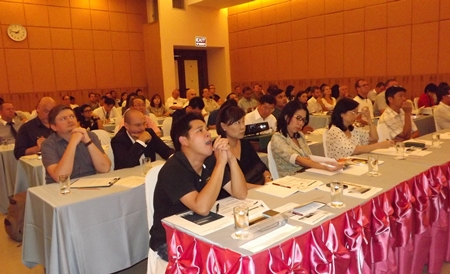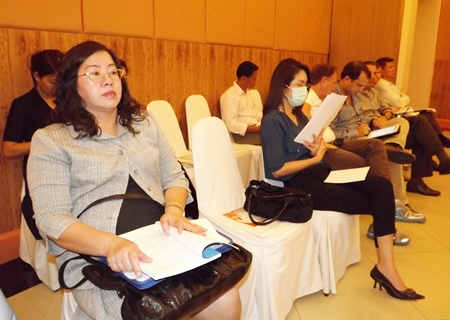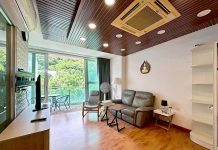Low-priced condominiums the trend de jour for both developers and buyers
The future prospects for the Pattaya real-estate market were outlined and discussed at a seminar held August 8 at the city’s Eastern Grand Palace Hotel and attended by a wide representation of local developers, real-estate agents and investors.
Organised by REBA Eastern Seaboard, the regional chapter of the kingdom’s primary association of realtors, the headline speaker at the meeting was Dr. Sopon Pornchokchai, President of the independent Agency for Real Estate Affairs (AREA), who recently conducted a comprehensive and exhaustive survey of the region’s property sector.
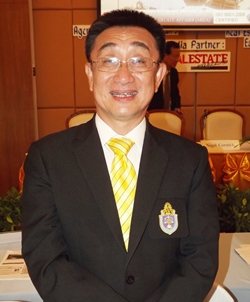 Dr. Sopon Pornchokchai.
Dr. Sopon Pornchokchai.
Dr. Sopon’s findings indicated that those involved in the Pattaya real-estate scene have a lot to be quietly optimistic about as the city’s recent property boom has seen it climb to a level where it now represents 15% of the total Bangkok market in a direct comparison.
Pattaya now has an amazing 232 projects with 50,000 units being offered for sale worth a total of 173 billion baht. This ranks Pattaya on a par with other Asian metropolises such as Jakarta in Indonesia, and way ahead of other popular Thai tourist destinations such as Phuket and Hua Hin. Not bad for a city with a standing population of just 500,000.
Not surprisingly, two thirds of the Pattaya developments are located on the popular beach side of Sukhumvit Road, of which 97% are condominium projects. More findings showed that half of the units in the 151 beach side condo projects were for sale at 2 million THB or less.
“The recent focus seems to have been on the lower end of the market and units are moving very quickly, in some cases like north Pattaya, in less than 1 month,” said Dr. Sopon. “Developers have learned to build for the lower end of the market,” he said.
The Doctor explained that sales of high-end condominium projects and detached villas are not moving fast enough to maintain developers’ interest however, with some luxury villas taking up to 2 years to sell, and thus Pattaya has seen a recent glut of the relatively low-priced condo units being introduced onto the market.
“Condos generally sell very quickly apart from those over 10 million THB and over 100sqm in size. We are seeing a move away from studios, which are becoming outdated, and 1-bedroom units are now the most popular choice regardless of actual room size. The high priced projects may be in trouble though, as that end of the market isn’t moving,” added the Doctor.
The crux however would seem to be that as more developments go up, the available land for new projects decreases and prices inevitably rise. This cost increases will ultimately have to be absorbed by customers at the end of the property chain, which should see real-estate values rise in accordance.
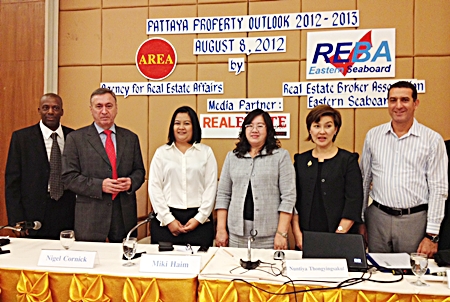 The seminar’s panel of experts (from left): Mark Welch – MD One Stop Real Estate, Nigel Cornick – CEO Kingdom Property Company, May Watson – President, REBA Eastern Seaboard, Nuntiya Thongyingsakul, – Technical Officer from The Department Of Land, Pattama Pornchokchai, and Miki Haim – MD Matrix Developments.
The seminar’s panel of experts (from left): Mark Welch – MD One Stop Real Estate, Nigel Cornick – CEO Kingdom Property Company, May Watson – President, REBA Eastern Seaboard, Nuntiya Thongyingsakul, – Technical Officer from The Department Of Land, Pattama Pornchokchai, and Miki Haim – MD Matrix Developments.
This fact hasn’t escaped the notice of one of the other speakers at the seminar, Miki Haim, Managing Director of the Matrix Group, which was one of the pioneers of the ‘1 million THB condo’ in Pattaya.
“We (Matrix) arrived in Pattaya as innovators but now we have had to react to the market,” said Miki. “Land prices have increased exponentially and we have had to change our product and focus. We believe that in the future ‘1 million baht condo’ developers will struggle. Customers who want cheap units will have to buy second hand,” he added.
The rapidly changing market has seen Matrix gradually move away from its successful Park Lane and Paradise Park blueprint and focus now on the city center where the company has already discovered a new market of Japanese and French investors for its City Center Residence project.
“We sold Park Lane (600 units) very easy in 2007 and likewise with Paradise Park,” continued the Matrix chief. “Now we have chosen to go to the city center and we believe that next year 2013 will be a good year for us and for the real-estate industry here in general, but people will need to work harder,” he concluded.
Mr. Haim’s concerns over the budget condo market were supported by another guest speaker, Nigel Cornick, CEO of Kingdom Property which recently announced its first project in the city, Southpoint, to be built on Pratamnak Hill in south Pattaya.
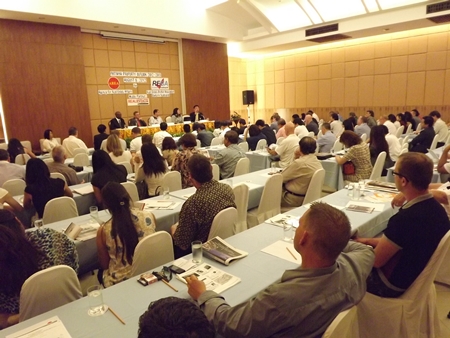 The seminar was well attended by those with a vested interest in the Pattaya real-estate scene.
The seminar was well attended by those with a vested interest in the Pattaya real-estate scene.
“In a market inundated with new projects it’s becoming more and more difficult to find good land,” said Nigel. “We can’t see how developers in the prime locations will be able to survive at the lower end of the market,” he added. “In future I think you can expect to see more, small boutique developments in good locations offering units in the 3-7 million baht price range,” he added.
“There are great opportunities here but for me it is important to focus on quality. And that’s not about gold taps but construction materials that last and that are low maintenance. This is what we did with Northshore and Northpoint and it is what we continue to believe in. Combine this with good design and location, ideally with views, and Pattaya still offers great value for buyers,” Nigel commented.
So it would appear that while Dr. Sopon’s statistics reveal an overall trend towards cheaper and smaller condo units being built and released onto the Pattaya property market, the view of two prominent developers here is that this trend is not sustainable in the long term due to increased construction costs.
If the developers are to be believed, one might discern that now would be a good time to invest in property here, but with the heavy-hitting Bangkok plc’s now getting involved in earnest in the Pattaya real-estate scene, and with many investors from the capital demanding affordable weekend homes and retreats, the remainder of 2012 and first quarter of next year should be a very interesting time to view what could potentially be a very fluid market.
With regard to the development of Pattaya and the Eastern Seaboard in general, Dr. Sophon though can only see things improving in the long term.
“There are currently 633 projects in Chonburi and Rayong (not including Pattaya) selling on the market,” advised the Doctor. “With the kind of recent actively we are seeing, eventually, this whole area will become one big megalopolis,” he added.
“Needless to say, the infrastructure will have to be improved accordingly,” he continued. “Many people think a mass transit system here in Pattaya would be an eyesore – but ultimately it will become a necessity. An express rail airport link will also be required,” he concluded.
Pattaya’s continued development was outlined by Deputy Mayor of Pattaya, Wirawat Kharkhai, who also addressed the meeting and said that City Hall planned a number of long-term environmental improvements for the destination including a new reservoir to assist the water supply, a massive garbage incineration facility and a waste-water plant capable of handling 130,000 cubic meters per day.
Plans are also in place to enlarge the beach, which is suffering from erosion, continue to move overhead power and telephone cables underground, and improve the transport system, although designs of a monorail for Pattaya are on the back-burner for now.
The public official also indicated that the company behind the MBK shopping complex in Bangkok now has plans to build a similar major shopping venue on Beach Road in central Pattaya in the not too distant future.
It all sounds like an exciting but also a challenging time to be involved in the rapidly evolving Pattaya property scene, but on an optimistic note we shall leave the final words to Dr. Sopon.
“In a typical urban center you would expect to find townhouses, detached houses and a few condos – but the Pattaya property market is made up of 80% condominiums and more projects are appearing all the time,” he said. “This signifies one clear fact – if there is a lot of supply here it also indicates there is a lot of demand.”
